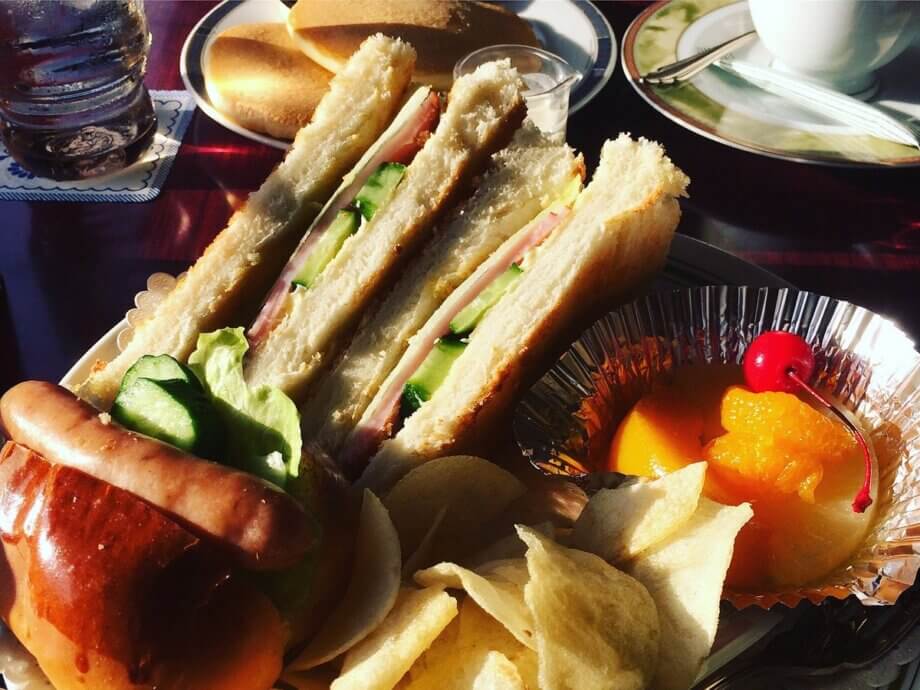The Enduring Legacy of Takase Ikebukuro Honten
In the bustling heart of Tokyo, just steps from the east exit of Ikebukuro Station, stands a shop that has quietly witnessed a century of change. Takase Ikebukuro Honten, with its nostalgic signage and inviting aroma of freshly baked sweets, is more than just a bakery—it is a living testament to Japan’s evolving relationship with Western confections and the enduring power of tradition.
Founded in 1920, Takase has become a beloved institution, drawing regular customers from across Japan. Its story is one of resilience, adaptation, and a steadfast commitment to quality that has allowed it to thrive through war, reconstruction, and the rapid modernization of Tokyo.
How Takase Became a Tokyo Landmark
The origins of Takase trace back to a time when Western-style sweets were still a novelty in Japan. The shop’s founder, trained as a baker, opened the original store in a different part of Ikebukuro. In 1935, Takase relocated to its current address at 1-1-4 Higashi-Ikebukuro, Toshima Ward, a move that would cement its place in the city’s culinary landscape.
World War II brought devastation to much of Tokyo, and Takase was not spared—the original building was destroyed in air raids. Yet, in the spirit of postwar recovery, the shop was rebuilt soon after the war ended. The new building, which still stands today, became a symbol of hope and continuity for the community. The shop’s name was also changed to Takase, honoring the founder’s hometown in what is now Mitoyo, Kagawa Prefecture.
Makoto Kojima, the current manager, reflects on the shop’s enduring atmosphere:
“I don’t think the feel of the shop has changed much from the time just after the war’s end.”
The interior, with its retro charm and well-worn display boards, evokes a sense of nostalgia that resonates with both longtime patrons and new visitors.
What Makes Takase’s Sweets So Special?
Takase’s reputation rests on its unwavering dedication to traditional methods and high-quality ingredients. The main shop’s glass showcases are filled with an array of cakes and sweets, while shelves display around 70 varieties of bread. Each item is crafted by hand, reflecting the shop’s belief in preserving classic flavors.
Among the most popular offerings are the almond tuiles—a baked sweet that has been a shop classic for over 50 years. Unlike the delicate French tuile wafers, Takase’s version is heartier, with a fragrant almond aroma, crisp texture, and a luxurious sweetness from butter and fresh cream. As Kojima notes,
“Many older folks come here for just this taste. It’s the shop’s trademark.”
Another enduring favorite is the anpan, a round bun filled with sweet red bean paste. The recipe has remained unchanged since the shop’s founding, a testament to Takase’s commitment to authenticity. Casino, a black-and-white bread with a creamy filling, is also a longtime bestseller, beloved by generations of customers.
Takase’s philosophy is simple: to meet the expectations of customers who return time and again for the flavors of their youth.
“When customers come here, they’re expecting that taste to be waiting here for them. We want to keep meeting their expectations,”
says Kojima.
The Evolution of Western-Style Sweets in Japan
To understand Takase’s significance, it’s important to consider the broader history of Western-style sweets (known as yōgashi) in Japan. The introduction of Western confections dates back to the late 19th and early 20th centuries, as Japan opened its doors to foreign influences during the Meiji era. Bakeries like Takase played a crucial role in adapting European recipes to suit Japanese tastes, often using local ingredients and less sugar.
Over the decades, Western-style bakeries became fixtures in Japanese cities, offering everything from cream-filled pastries to elaborately decorated cakes. Takase distinguished itself by maintaining a careful balance between innovation and tradition, ensuring that its products remained both familiar and fresh.
Surviving War and Modernization
The destruction of Takase’s original building during World War II was a turning point. The postwar years were marked by scarcity and hardship, but also by a collective determination to rebuild. Takase’s swift reopening in a new building symbolized the resilience of small businesses and their importance to local communities.
As Tokyo modernized, many traditional shops disappeared, replaced by chain stores and international brands. Takase, however, managed to expand its network to five locations in Ikebukuro, Itabashi, and Sugamo, while retaining its core identity. The main shop’s retro ambiance and hand-crafted sweets offer a comforting contrast to the city’s fast-paced, high-tech environment.
Inside the Takase Experience: More Than Just a Bakery
Visiting Takase Ikebukuro Honten is a sensory journey. The ground floor bakery greets customers with the sight and smell of freshly baked goods. The second floor houses a cozy café, where patrons can enjoy cakes and coffee in a relaxed setting. On the third floor, a restaurant serves hearty Western-style dishes, including the ever-popular hamburger steak—a nod to the shop’s roots in Western cuisine.
The shop is open 365 days a year, from 9 a.m. to 9 p.m., making it a reliable destination for locals and tourists alike. Its location, just a minute’s walk from Ikebukuro Station, ensures a steady stream of visitors, many of whom have made Takase a part of their daily routines or special occasions.
Customer Loyalty and Generational Appeal
One of Takase’s most remarkable achievements is its ability to attract customers across generations. Older patrons return for the familiar flavors of their youth, while younger visitors are drawn by the shop’s retro charm and Instagram-worthy displays. The sense of continuity and community is palpable, with staff members often forming long-term relationships with regular customers.
Takase’s Place in Tokyo’s Culinary Heritage
Takase is more than just a bakery—it is a cultural landmark that embodies the spirit of Tokyo’s Shitamachi (old downtown) neighborhoods. Its survival and success offer valuable lessons about the importance of tradition, adaptability, and community in an ever-changing city.
As Tokyo continues to evolve, shops like Takase serve as reminders of the city’s rich history and the enduring appeal of hand-crafted, thoughtfully made food. For many, a visit to Takase is not just about satisfying a sweet tooth, but about reconnecting with the past and celebrating the simple pleasures of life.
In Summary
- Takase Ikebukuro Honten is a century-old pastry shop in Tokyo, renowned for its traditional Western-style sweets and breads.
- Founded in 1920, the shop survived wartime destruction and was rebuilt, maintaining its classic atmosphere and recipes.
- Signature items include almond tuiles, anpan, and Casino bread, all made by hand using time-honored methods.
- Takase has expanded to five locations but remains committed to quality and customer loyalty.
- The shop is a beloved cultural landmark, reflecting Tokyo’s history and the enduring appeal of traditional bakeries.




